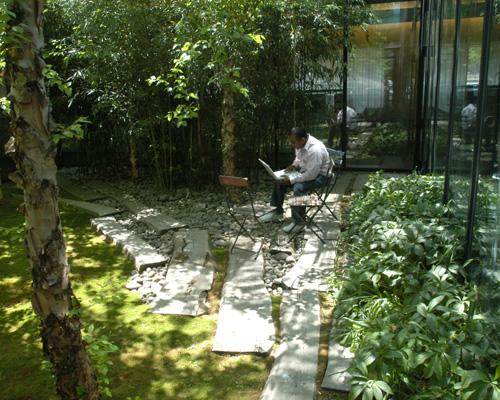





we have to forest our farms and farm our forests
 1
1





Just call me Uncle Rice.
17 years in a straw bale house.
 2
2




I'm just a girl trying to fix some seriously damaged land. Seriously.
 2
2




 2
2




Jennifer Jennings wrote:Do black locusts excrete the same type of anti-plant chemicals that kill off other competing greenery like black walnuts?
My project thread
Agriculture collects solar energy two-dimensionally; but silviculture collects it three dimensionally.
 2
2




And the LORD God took the man, and put him in the garden of Eden to dress it and to keep it. - Gen 2:15
 2
2




My project thread
Agriculture collects solar energy two-dimensionally; but silviculture collects it three dimensionally.
 2
2




Dan Cruickshank wrote:Does anyone have experience with the locust borer destroying or spoiling black locust trees? Any idea how much damage to expect, or whether or not there are ways to mitigate the damage?
I keep getting interested in all of the wonders of black locusts, but get a little timid when reading about the bug damage.
Thanks,
Dan
 3
3




The problem is the solution;;;Dan Cruickshank wrote:Does anyone have experience with the locust borer destroying or spoiling black locust trees? Any idea how much damage to expect, or whether or not there are ways to mitigate the damage?
I keep getting interested in all of the wonders of black locusts, but get a little timid when reading about the bug damage.
Thanks,
Dan
we have to forest our farms and farm our forests
 2
2




 2
2




we have to forest our farms and farm our forests
 2
2






My books, movies, videos, podcasts, events ... the big collection of paul wheaton stuff!
 2
2




we have to forest our farms and farm our forests
 2
2




 2
2




My project thread
Agriculture collects solar energy two-dimensionally; but silviculture collects it three dimensionally.
 2
2




 2
2




 2
2




My project thread
Agriculture collects solar energy two-dimensionally; but silviculture collects it three dimensionally.
 2
2




My project thread
Agriculture collects solar energy two-dimensionally; but silviculture collects it three dimensionally.
 3
3




 2
2




 2
2




Dale Hodgins wrote:I followed the link in the middle of Paul's last post. The Hungarians have been growing black locust for 300 years and have developed 49 cultivars. I wonder how many of these improved strains have made it back to North America ? Many are adapted to dry, sandy conditions and were used to control the dust bowl conditions that thousands of years of farming and grazing produced. Some of these cultivars might prove effective in areas with marginal land and rainfall in the American west.
we have to forest our farms and farm our forests
 2
2




Creighton Samuiels wrote:...how much spacing should I allow for BL seedlings that I don't desire to grow larger than 6" in diameter before harvesting? Should I consider a single row on one foot centers, like a living fence row, and just coppice/pollard above fence height?
My project thread
Agriculture collects solar energy two-dimensionally; but silviculture collects it three dimensionally.
 2
2









we have to forest our farms and farm our forests
 2
2




 2
2




My project thread
Agriculture collects solar energy two-dimensionally; but silviculture collects it three dimensionally.
 3
3




My project thread
Agriculture collects solar energy two-dimensionally; but silviculture collects it three dimensionally.




Cj Verde wrote:A 6" diameter Black Locust is worth much more as a fence post than as fuel.




My project thread
Agriculture collects solar energy two-dimensionally; but silviculture collects it three dimensionally.




Cj Verde wrote:Why?
 2
2




My project thread
Agriculture collects solar energy two-dimensionally; but silviculture collects it three dimensionally.




where are you???Margie Nieuwkerk wrote:ok, so to follow up on the earlier questions:
approximately how far apart to plant for coppicing for fuel
approximately how long will it take from seed to 6 inch diameter?
Anyone have any experience with coppicing and how fast/thick the branches grow on a yearly basis?
we have to forest our farms and farm our forests




where are you???andrew curr wrote:
My project thread
Agriculture collects solar energy two-dimensionally; but silviculture collects it three dimensionally.
 3
3








Cj Verde wrote:Creighton Samuiels,
This is something for you to consider too. You could still use BL in your coppice rotation but have faster growing trees too. My husband cut down a maple 2 years ago and it's ready to harvest for fuel wood now. I suspect that if it really takes 30 years to reach 6" then that makes sense why it's worth much more as a fence post than as firewood.




 2
2




My project thread
Agriculture collects solar energy two-dimensionally; but silviculture collects it three dimensionally.






|
My favorite is a chocolate cupcake with white frosting and tiny ad sprinkles.
Back the BEL - Invest in the Permaculture Bootcamp
https://permies.com/w/bel-fundraiser
|







